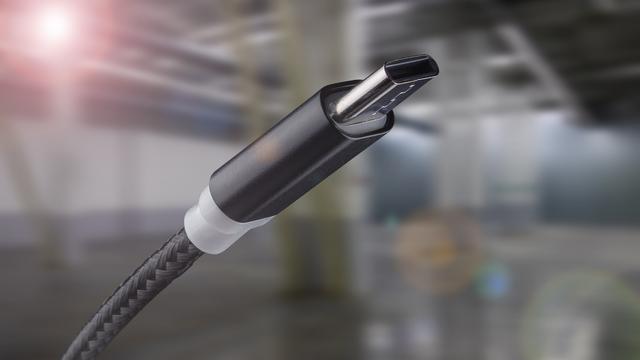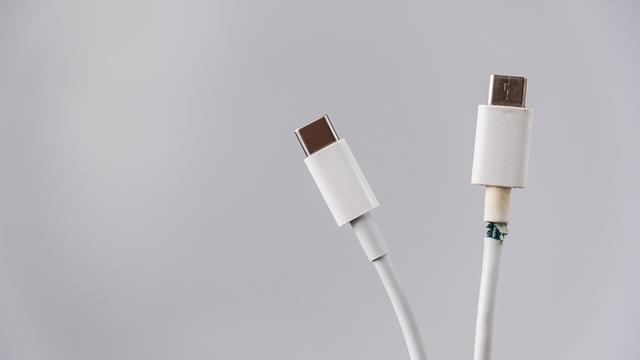
Why USB-C Isn’t the One Port to Rule Them All (Yet)
Having one standard connector to power and charge all of your devices would make life a lot easier, and given the uptake, USB-C is a strong candidate for the “Universal Port” title. But it isn’t quite there yet.
Devices still show up with lightning connectors and barrel jacks, and manufacturers have several good reasons for using those alternatives. Those reasons range from cost to practicality to significant safety concerns.
So what are the shortcomings of the USB-C system? And what challenges does it need to overcome if it is going to be the one port everyone uses?
Table of ContentsWhy USB-C Could be a ContenderThings Can Get a Little ConfusingA "Cheap" Cable Can Lead to DisasterThe Price Is a ProblemApple Still Isn't Fully on BoardUSB-C Struggles With Higher WattagesThese Issues May Soon be a Thing of The Past
Why USB-C Could be a Contender
On the face of it, USB-C has everything you need. The port can provide enough power to run and charge a device as large as a laptop, which it often does, while also transferring data at high speeds. Speeds of 10GB per second are possible for USB 3.2 Gen 1×2 (if you don’t know what that is, we’ll be delving into USB types shortly), and Thunderbolt 4 ports support up to 40GB per second speeds while supplying up to 100 watts of power.
Despite not being the “one and only” option, the port is incredibly popular, seeing uptake from major manufacturers. Apple uses USB-C on its MacBooks and iPads, Meta uses it on the Quest, Samsung uses it on its phones, and many PC manufacturers rely on it for laptops.
This sort of uptake has two key benefits. It avoids the kind of head-to-head war that gave us Betamax vs. VHS and BluRay vs. HD-DVD—and it makes life easier for users. Instead of using three charging ports or fishing around with specific cables, I tend to charge my Quest, Kindle, Phone, and other small devices from the same wire at different times.
Things Can Get a Little Confusing
All USB-C ports, connectors, and cables look the same. They will all connect to each other. But two different USB-C ports or cables, while appearing identical, can have a vast difference in quality and properties.
To get all of the benefits of USB-C, cables and ports should be using some version of “USB 3.2,” if not “USB 4.”This will allow the cables to transfer data at anywhere between 5GB per second and 40GB per second, depending on the version of USB the cable and port are using.
Unfortunately, a lot of cheaper cables are using USB Gen 2. Using an older standard means transfer speeds are significantly slower, and they’re only helpful for charging small devices.
A “Cheap” Cable Can Lead to Disaster
Cheap cables have more significant problems than slow transfer speeds and a lack of power. If you get a poorly designed USB-A (the one most people picture when you say “USB port”) to a USB-C cable, you could damage your charger, the device you’re charging, or even cause a fire. As USB-A is a more common port, there are plenty of USB-C to USB-A cables around as people want to connect their devices to older chargers or laptops.
The problem occurs because of USB-C’s design. The cables themselves are supposed to regulate how much power can go through them. USB-A ports cannot pump out as much energy as some devices using USB-C demand.

A properly designed and licensed cable will limit the amount of power a device can draw. Regulating power output will protect the cable, the device, and the charging port. Unfortunately, many cables on the market (including some that shipped out with cellphones) don’t meet these standards.
Users should look for USB-IF certified cables to ensure their devices won’t get damaged. These cables aren’t necessarily the most expensive—every USB cable in the Amazon Basics range has this certification. People may not know this and opt for the cheapest option when buying a cable. When disaster happens, there’s a good chance the device itself will get the blame.
The Price Is a Problem
The issues with cheap cables may make it seem like USB-C is some unregulated free-for-all. But USB-C isn’t a piece of patent-free tech. Everything, including the USB logo itself, is owned copyrighted, and the owners charge a fee for any commercial use.
USB-IF certification also costs money if companies want to prove they’re making a high-quality product. The costs and the effort involved are offset somewhat by the membership benefits. The USB logo fee is waived for USB-IF members, discounts are available for products and developer conference tickets, etc.
However, designing and producing a USB-C device may not make sense if a company wants to keep costs down. Many coaxial power connector designs, like the classic barrel jack configuration, are free to use. As a result, they remain a popular choice—particularly on cheaper electronics.
Older cables are also less complex and cheaper to manufacture than high-end USB C cables.
Apple Still Isn’t Fully on Board
Apple is undoubtedly one of the big boys, accounting for around a quarter of cellphone sales and over 7% of worldwide computer sales. A port cannot become a standard without Apple fully coming on board.
Some Apple devices make use of USB-C, including Macbooks and iPads. However, a few smaller devices like iPhones still use Apple’s Lightning connector instead. Apple is avoiding the switch for a few reasons. Profit is a factor; Apple gets a $4 royalty from every Lightning cable manufactured and sold. There is also speculation that Apple won’t make the switch because of waterproofing concerns and due to the fact it would give them less overall control over their devices’ designs.
Despite the European Union proposing to make USB C the standard connector on the continent, Apple might opt to drop charging ports entirely. A persistent rumor involves future iPhones ditching cables in favor of their Magsafe system.
USB-C Struggles With Higher Wattages
The maximum output any of the gen 3 USB-C devices can handle is 100 Watts or 6 AMPs which can power an extensive range of devices. Unfortunately, many higher-end laptops, speakers, and displays require a significant amount of power, which USB-C cannot deliver.
A standard laptop likely needs less than 100 Watts, but if you have something more demanding, gen 3 USB C just won’t cut it. It doesn’t even require a high-end gaming laptop to push beyond the 100-watt limit; dedicated graphics and a half-decent set of speakers may do that. The Asus N550JK I’m writing this on isn’t a gaming laptop, but its charger can still provide up to 116 Watts of power.
Some portable devices, like Hyperboom’s party speakers, have stuck with a barrel jack configuration because of power limitations.
Although you will need to find a specific cable with the right barrel jack on it and the correct power input to power a device, the cable you get will work. The nature of older cables makes you pay attention to things like voltage range, wattage, and the size of the jack.
When I needed to replace my laptop charger, I searched by the laptop brand, voltage, and amperage. As a result, I ended up with an exact charger. If I need a new phone charger, I’m more likely to type (and guilty of typing “USB-C cable” into Amazon—which could lead to some significant issues.
Earlier, we mentioned how all USB-C ports and cables aren’t the same. Despite this, if you’re a logical thinker, you may believe higher-end USB-C components with faster transfer speeds can also handle higher wattages. However, transfer speed and the amount of power a USB-C cable can handle are independent.
These Issues May Soon be a Thing of The Past
A lot of the issues, and confusion, seem to be a result of USB-C trying to bridge the gap between older connections and the current cutting edge. Keeping USB-A ports relevant can lead to device damage when using the wrong cable, and the limitations of older tech are acting as a bottleneck—slowing down the newer stuff.
Things may change as the USB 4 standard becomes more popular. USB 4 only uses type C connectors, so the near-obsolete Type-A ports may start being phased out and take the problems they are causing with them.
USB 4 also has transfer speeds starting at 40GB per second and can provide up to 240 Watts of power. So instead of a confusing mass of different specs, you’ll know what you’re getting when you buy a USB 4 cable. 240 Watts is also enough to power a more extensive range of electronics, including most gaming laptops, speakers, and some TVs. 240 Watts is even enough power to run the majority of desktop PCs, though it is impossible to predict if someone will design a USB-powered desktop or not.
DC connectors like barrel jacks will only appear on low-end devices or devices requiring a lot of power. Certain high-end gaming laptops, speaker systems, monitors, and TVs require more power than even USB 4 can handle.
Change doesn’t happen overnight, but the leap to USB 4 and Type-A ports left in the past might be what USB-C needs to become the standard port everyone has been waiting for.
}})